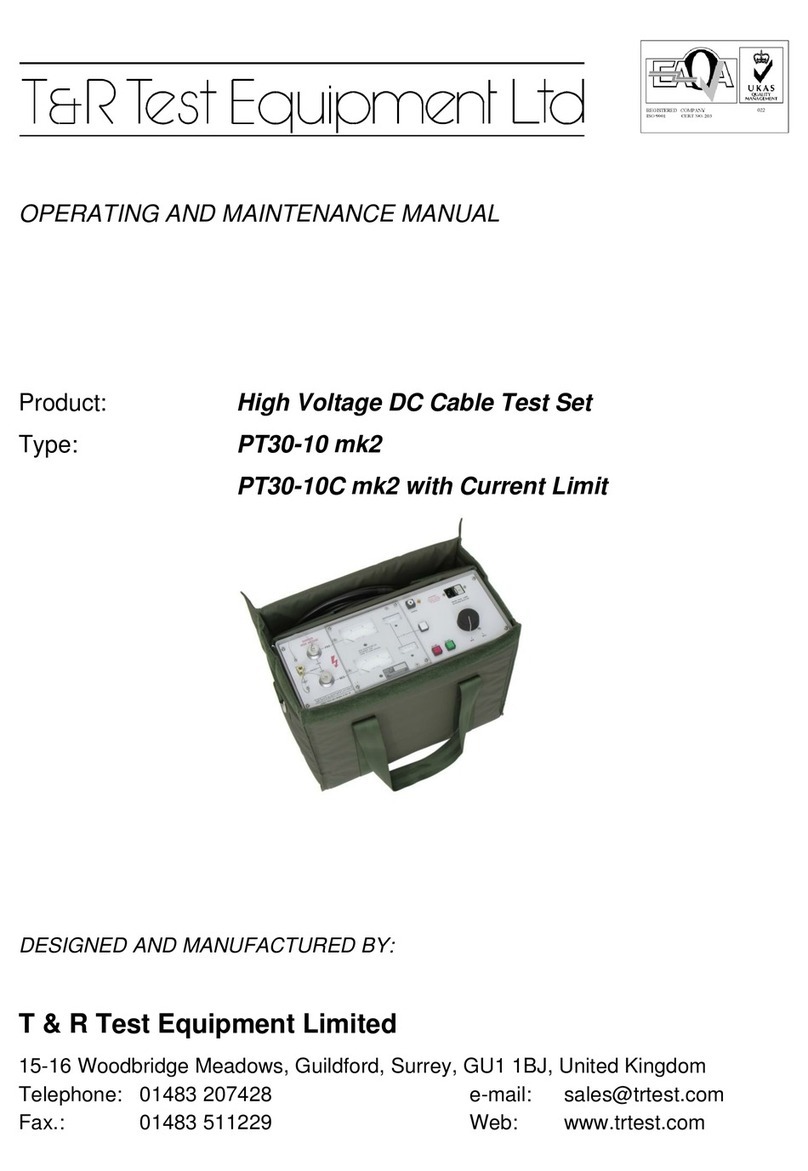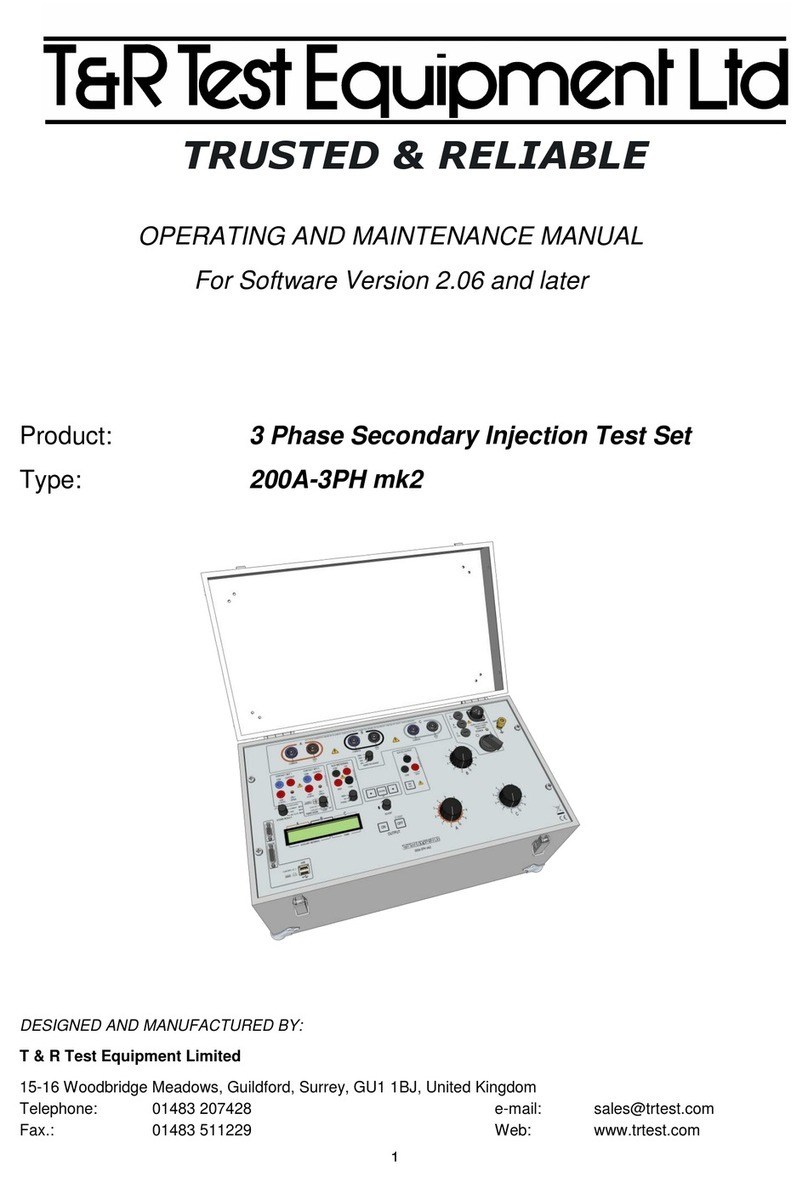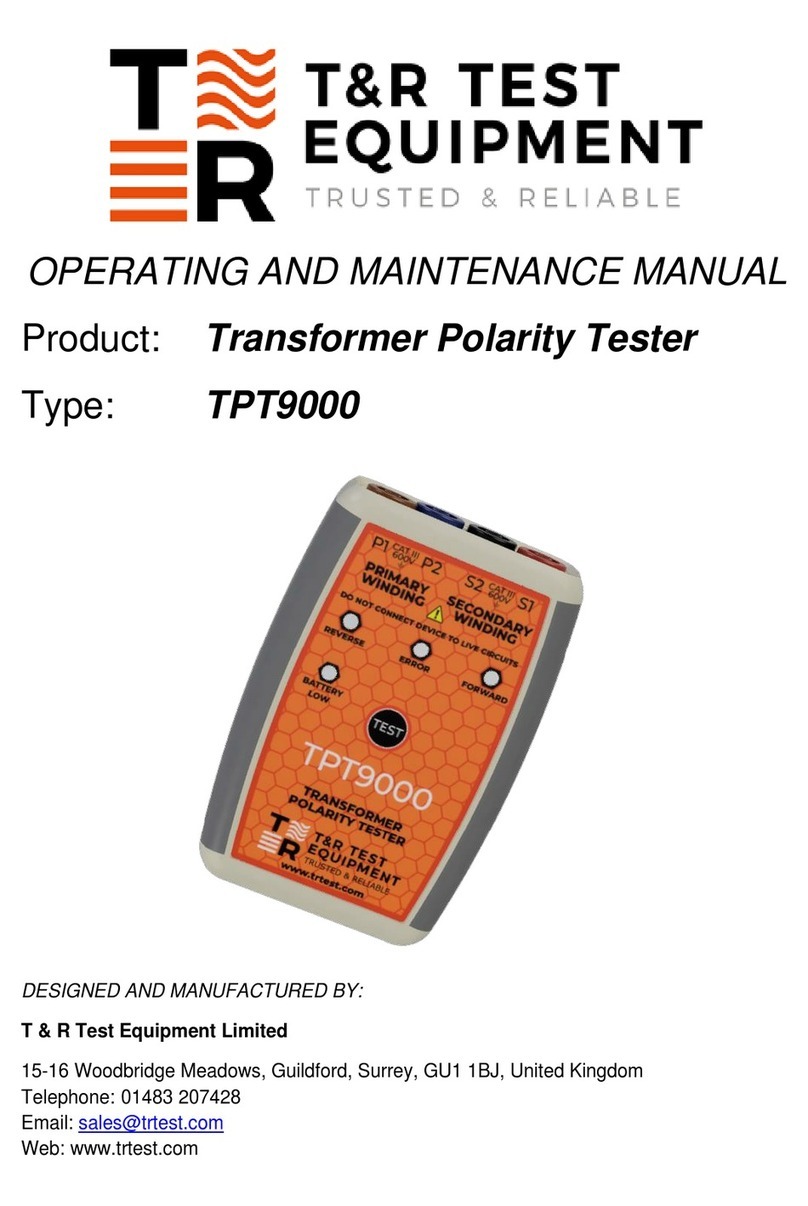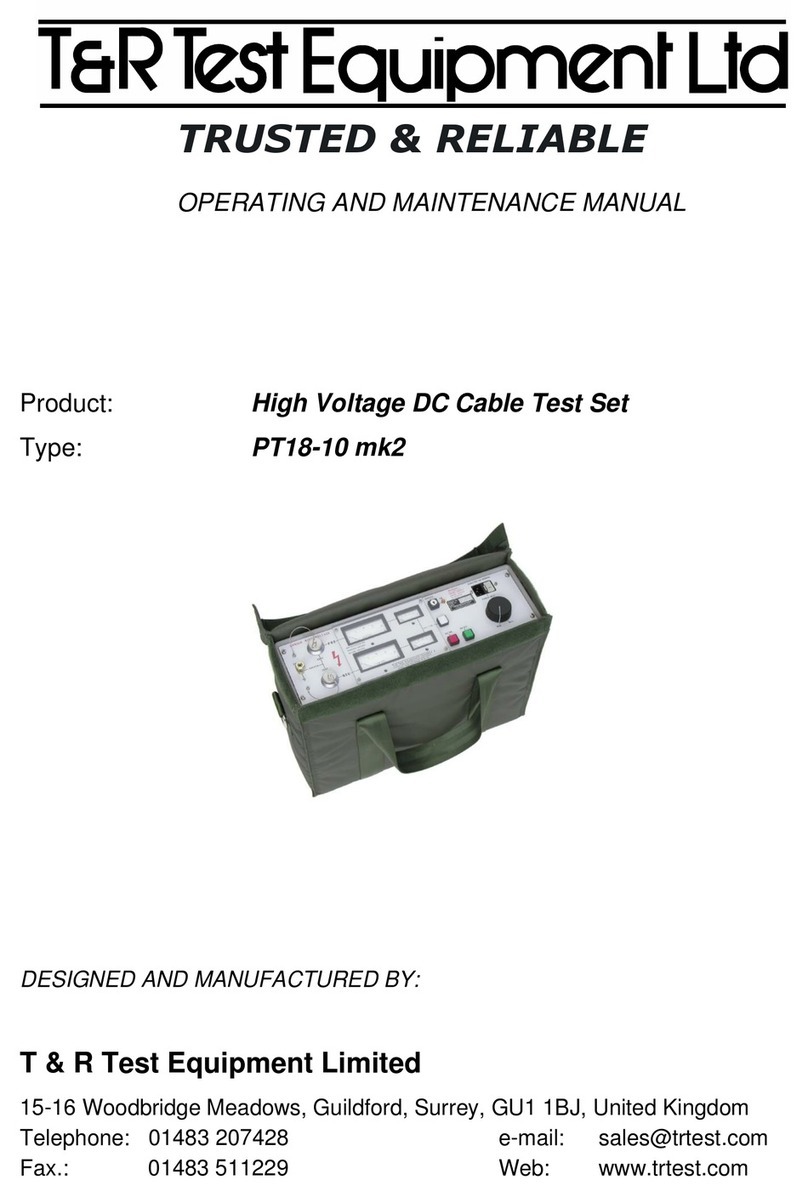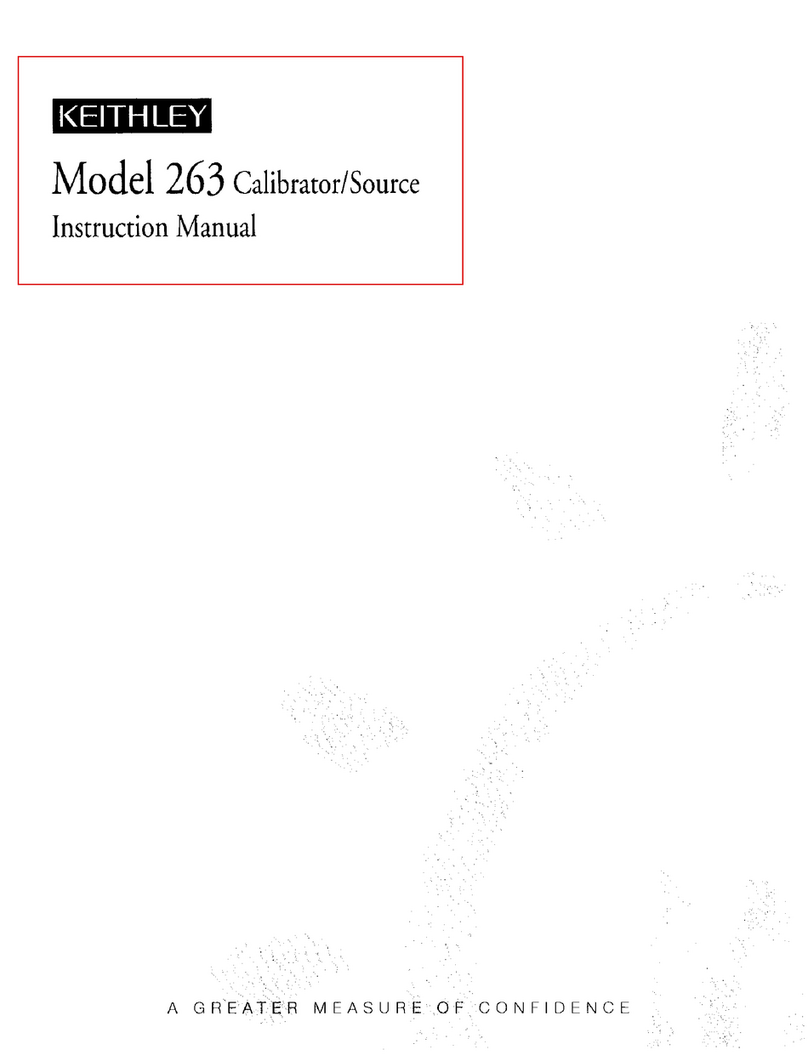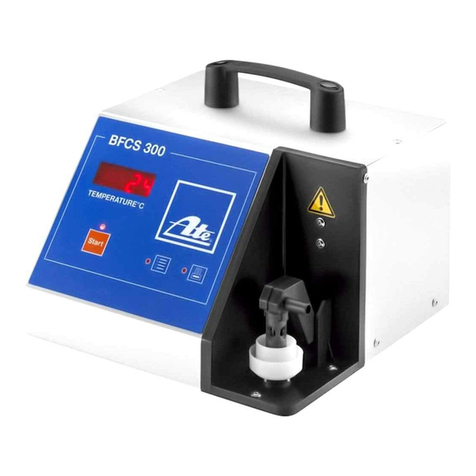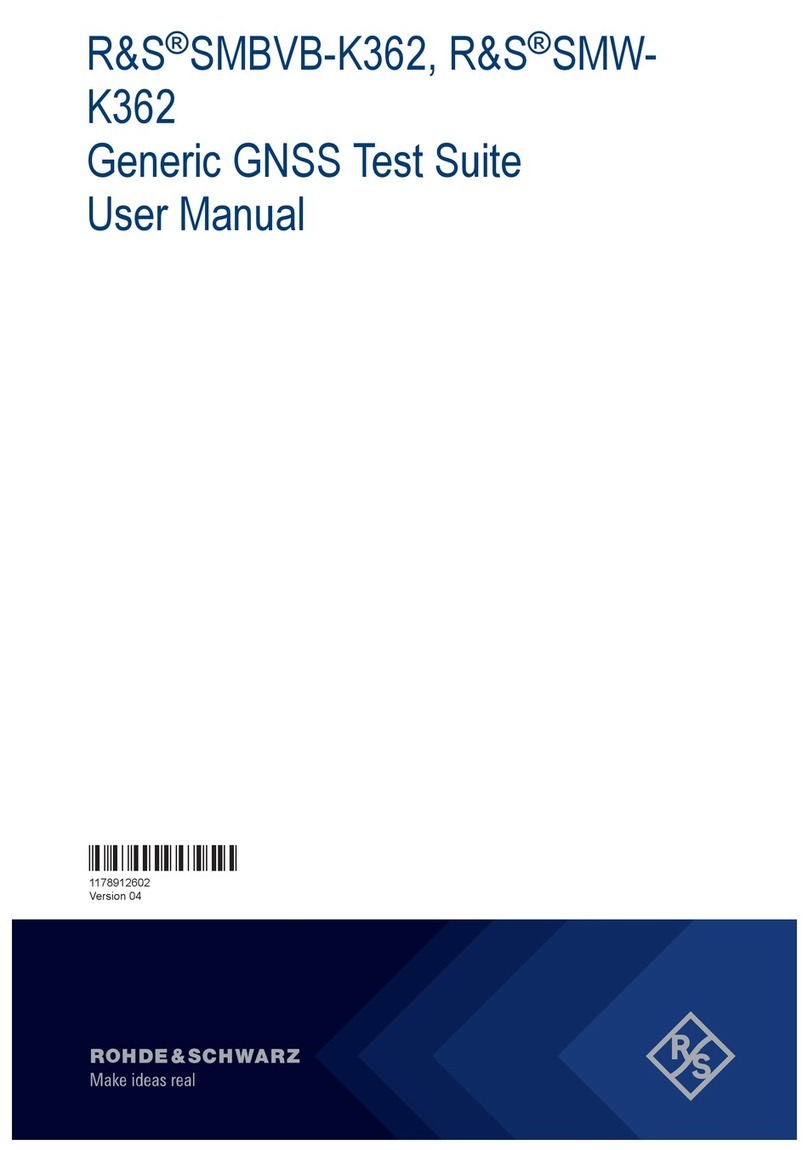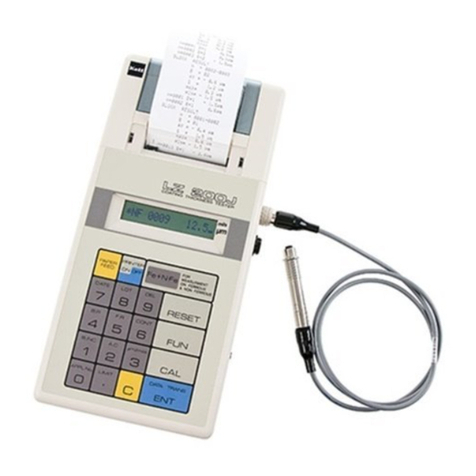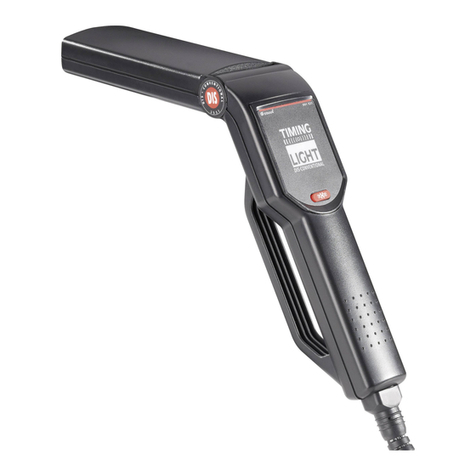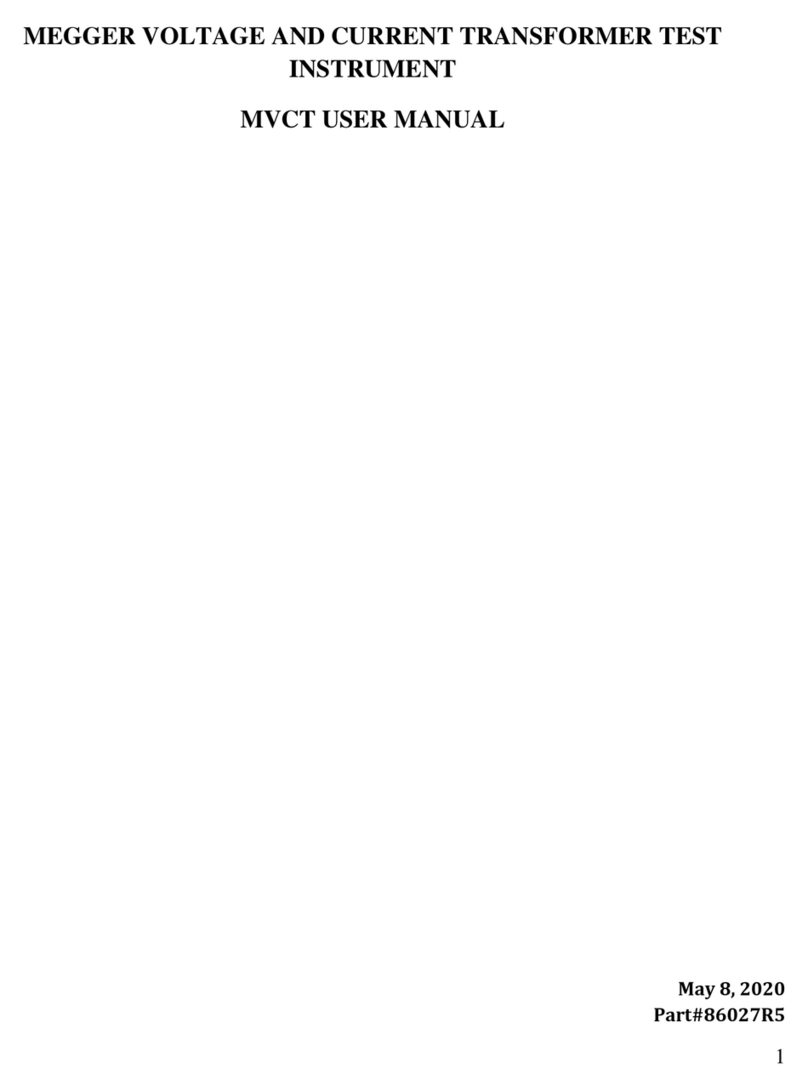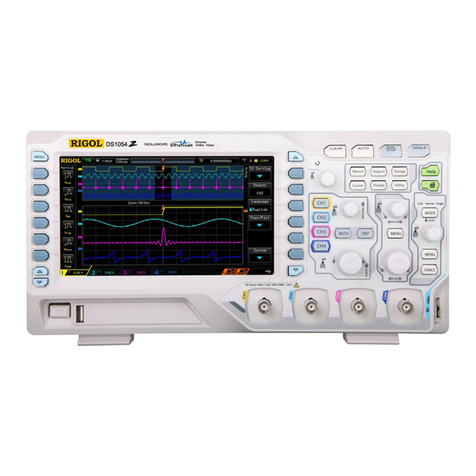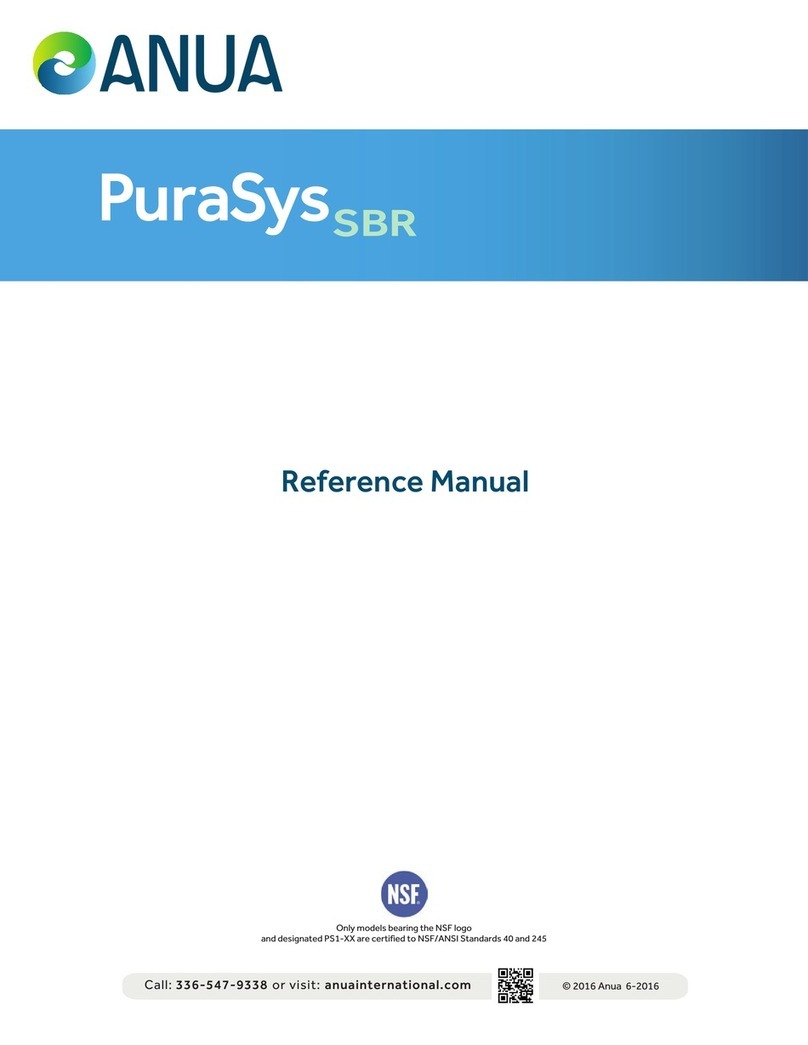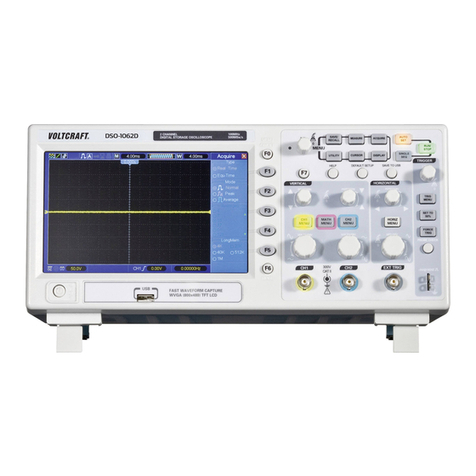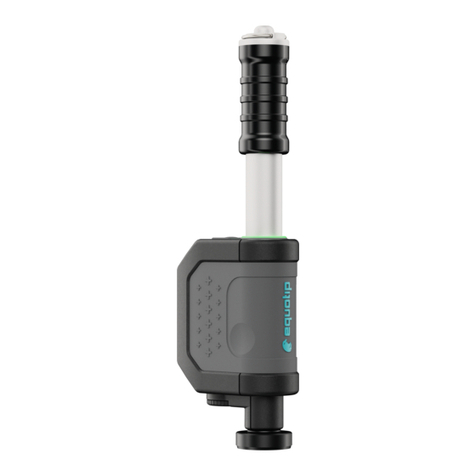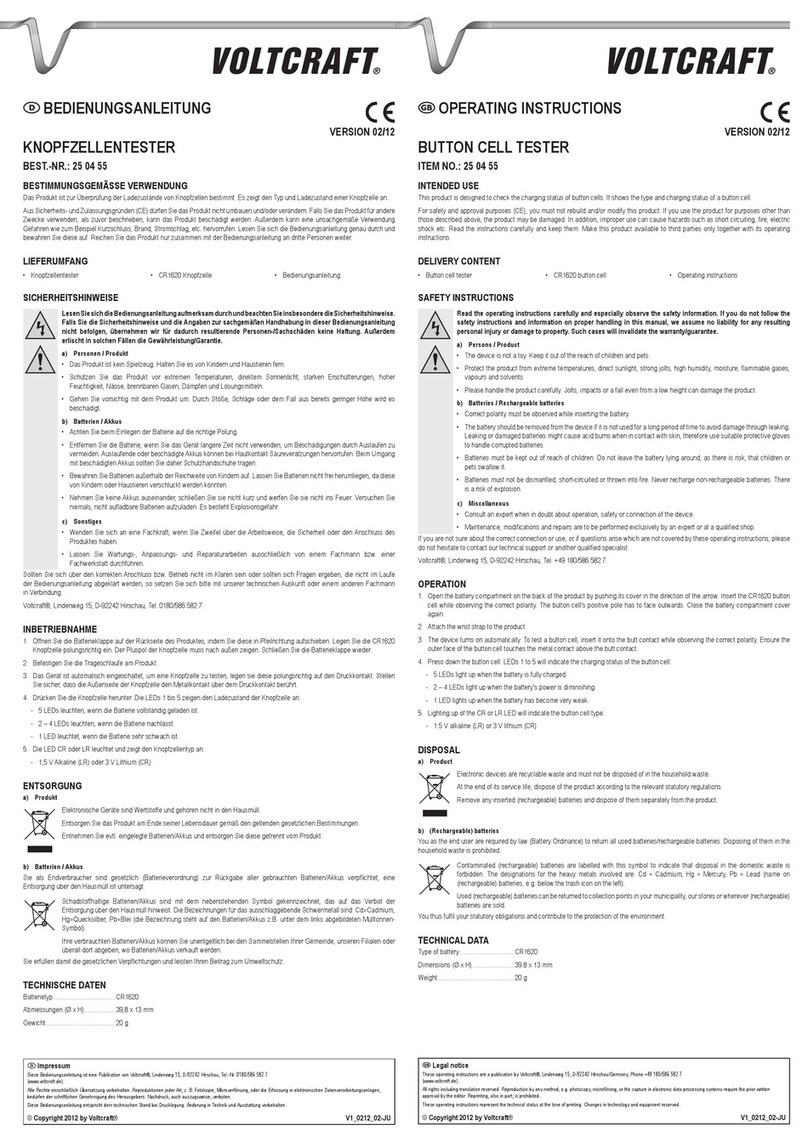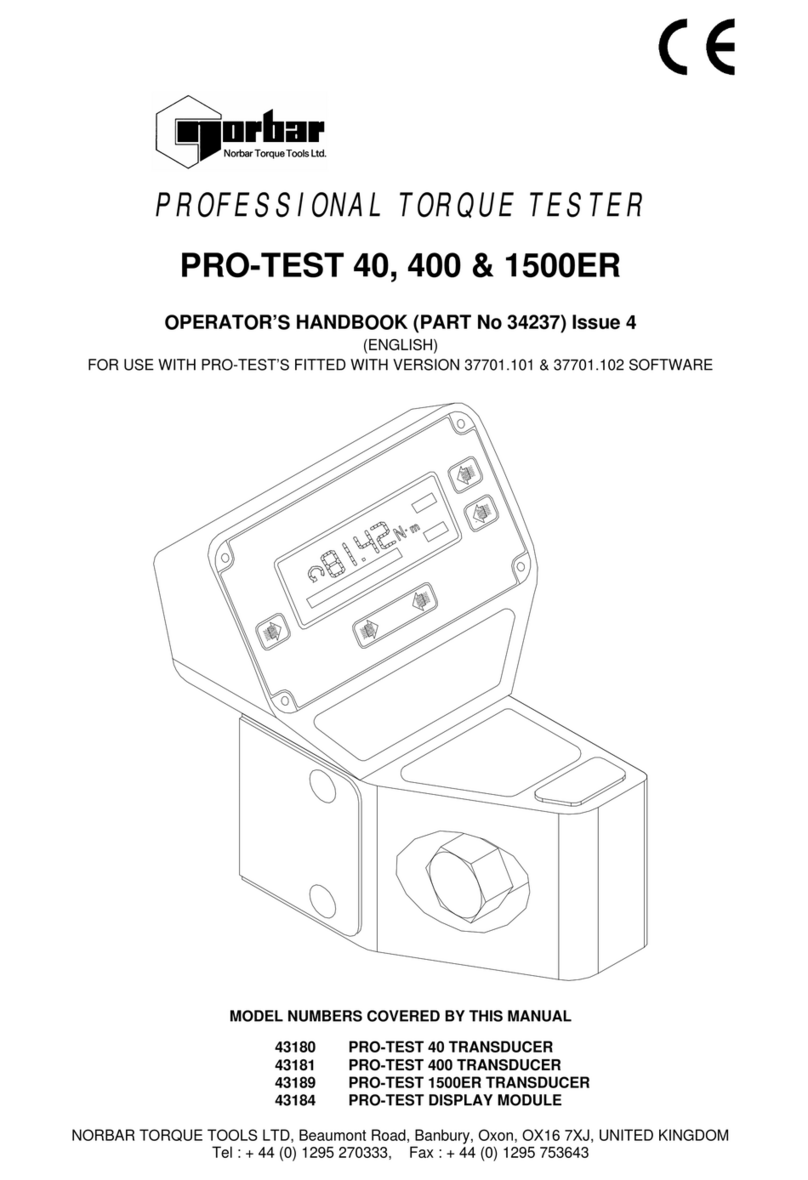T&R PT30-10 Operating instructions

OPERATING AND MAINTENANCE MANUAL
Product: High Voltage DC Cable Test Set
Type: PT30-10
DESIGNED AND MANUFACTURED BY:
T & R Test Equipment Limited
Keens Lane, Worplesdon, Guildford, Surrey, GU3 3LS, United Kingdom
Telephone: 01483 235757 e-mail: [email protected]
Fax.: 01483 235759 Web: www.trtest.com

2

3
GENERAL SAFETY STATEMENT
The following safety precautions should be reviewed to avoid injury to the user and damage to the
product (and other products connected to it). To avoid potential hazards only use this product as
specified.
Only suitably qualified personnel should use this equipment. Servicing of this product should only
be carried out by suitably qualified service personnel.
Hazardous voltages and currents are present on the outputs of this unit.
To Avoid Fire Hazards and Personal Injury
Use the correct power supply lead. Only use a suitably rated and approved power supply lead for
the country of use.
Ensure that systems that the unit is to be connected to are dead.
Do not connect and disconnect leads whilst outputs are switched on.
Ensure that the product is grounded. To avoid electric shock it is essential that the grounding
conductor is connected to the earth ground. If an additional earth terminal is provided on the
equipment that may be connected to a local earth. Ensure that the product is properly grounded
before making any connections to inputs or outputs.
Terminal ratings must be observed to prevent fire hazards and risk of injury to the operator.
Consult the product manual for ratings information before making connections to any terminal.
It is ESSENTIAL to consult the product manual for rating information before making any
connection to a terminal or terminal group marked with a warning triangle.
Only use fuses of a type and rating specified for this product.
Do not operate the unit out of its case or with any covers or panels removed.
Do not touch exposed connections and components when power is present.
Do not operate the product if any damage is suspected. Refer the unit to qualified service
personnel to be checked.
Do not operate the unit in wet or damp conditions
Do not operate the unit in an explosive atmosphere
If any further queries occur regarding the usage and maintenance of the
equipment detailed in this manual, please refer these to the supplier of the
equipment in the first case or to:
T & R Test Equipment Limited

4

5
CONTENTS
1. Description of Equipment
2. Operation of Equipment
3. Maintenance Instructions
4. Standard Accessories
5. Overall Performance Specification
6. Calibration Results
7. Test Certificate
8. Revision

6

7
1. DESCRIPTION OF EQUIPMENT
1.1 Electrical Specification
1.2 Output Voltage Control
1.3 Overload Protection
1.4 Metering
1.5 Automatic Earthing
1.6 Manual Earthing Using DP40 Discharge/Earthing Probe
1.7 High Voltage Output Cables
1.8 Construction

8

9
1.1 Electrical Specification
1.1.1 The supply voltage for the equipment is 240/220/115V, single phase, 50/60Hz. Each
input will tolerate the following voltage variation:
240V +/- 10%
220V +/- 10%
115V +10% and -6%
1.1.2 The maximum power supply requirements will be 750VA.
1.1.3 The output voltages which are continuously obtainable from the equipment are as
follows:
a. 30kV DC positive with respect to earth
b. 30kV DC negative with respect to earth
c. 30kV DC positive and negative with respect to earth simultaneously, thus
giving 60kV DC between the outputs
1.1.4 The maximum output current obtainable from all outputs as detailed in 1.1.3. above
are as follows:
a. 5 milliamperes continuous
b. 10 milliamperes for a duty cycle of 5 minutes ON followed by 15 minutes OFF
load
1.1.5 The earthy end of the high voltage output is connected to the earth system of the
equipment.
Note: There is a Voltage Dependent Resistor, internal connected between neutral & chassis.

10
1.2 Output Voltage Control
1.2.1 The output from the equipment is controlled from zero by means of a regulating
transformer.
1.2.2 The regulating transformer is operated by means of a control knob which is located
on the right hand side of the instrument's front panel.
1.2.3 To increase the output voltage turn the control knob in a clockwise direction.
1.2.4 Note: The output can not be energised unless the regulator knob is set to zero,
thus operating the zero voltage interlock switch.

11
1.3 Overload Protection
1.3.1 The instrument is fitted with a fast acting fuse which protects the incoming mains
supply to the unit. The rating of the fuse is as follows:
F 5amp for 240V/220V/115V operation
1.3.2 The outputs from the instrument are protected by means of a fast acting magnetic
overload relay which in turn controls anoutput contactor. The overload is set for
12-15 milliamperes.

12
1.4 Metering
1.4.1 The equipment is fitted with two output kilovoltmeters, which sense both the positive
and negative outputs simultaneously. Both instruments have a single range of 0-30
kilovolts. Each division on the instruments represent 1 kilovolt. The individual
meters are captioned as follows:
a. Positive kilovoltmeter: + kV DC (In red)
b. Negative kilovoltmeter: - kV DC (In blue)
1.4.2 The equipment is fitted with twooutput milliammeters, which sense both the positive
and negative output currents simultaneously. The individual meters are captioned as
follows:
a. Positive milliammeter: + mA DC (In red)
b. Negative milliammeter: - mA DC (In blue)
The output milliammeters are dual range as follows:
Range 1: 0 - 10mA Each division being 0.5mA
Range 2: 0 - 1.0mA Each division being 0.05mA
The range change on the milliammeters is achieved by means of an impulse push-
button which is coloured white and locatedon the front panel of the equipment. The
rest position is Range 1 and the activated position is Range 2.
1.4.3 The voltage and current monitoring systems for each output are totally independent
of each other.

13
1.5 Automatic Earthing
1.5.1 AUTOMATIC DISCHARGE/EARTHING
The automatic discharge system, which is fail safe, will discharge a maximum of
2.5 kilojoules at 30kV DC four times every hour. The contact surfaces of the internal
dump switches are made of very hard dissimilar metals to contain contact
burning and erosion.
1.5.2 The automatic discharge/earthing switch is controlled by a electro/mechanical device
when the HT output is energised the electro/mechanical device will be slightly noisy,
the noise will be more pronounced at low mains voltage.

14
1.6 Manual Earthing Using DP40 Discharge/Earthing Probe
1.6.1 Important:- DP40 Discharge/Earthing Probe
WARNING NOTICE
Under no Circumstances Must the Discharge/ Earthing
Probe be Used on Energised A.C. Distribution Systems.
Failure to Observe the Above Will Result in
Severe Damage to the Discharge Probe and, More
Importantly, Possible Fatal Injury to the Operator.
1.6.2 The Spectification for DP40 Max. discharge voltage (kVdc) 40kVdc
Max. discharge capacitance 6µF
Max. discharge energy 7.2kJ
Max. discharges per hour 4
1.6.4 Using DP40 with the PT30-10.
The DP40 is capable of discharging 7.2 kilojoules of stored energy at 30kV four times
every hour.
Resistor stack
Earth hook
Connection tag. Red hand
guard
1.6.3 DP40:- two part construction, overall length = 900mm
5 metre clear silicon rubber covered
multistranded copper conductor.6mm2

15
1.7 High Voltage Output Cables
1.7.1. The high voltage output cables provided with the equipment are 5M long and are
terminated with a suitable connector allowing a good secure connection to the test
object. The cable type used is UR67M with a multi-stranded inner core. The
outer screen is connected via the high voltage plug to the ground connection on the
PT30-10.
1.7.2. The high voltage plug is protected in transit by a plastic cover. The plastic cover is
attached to output cable by means of thick nylon cord.
1.7.3. The high voltage plugs used on the PT30-10 are fully de-mountable, thus allowing for
retermination on site should the output cables become damaged.

16
1.8 Construction
1.6.1. The PT30-10 is housed in a robust case consisting of a rigid frame construction
with removable side covers to provide good access and serviceability.
1.6.2. All the controls are located on the equipment's front panel, together with all input and
output connections. The instrumentation is mounted on a sub-chassis which, inturn
is mounted to the front panel via a shock absorbing system. Also the instrumentation
is further protected by means of a polycarbonate cover to prevent damage to the
instruments’ front faces.
1.6.3. The PT30-10, is housed in a padded bag manfuactured from a waterproof material, for
maximum protection during transit. The bag is fitted with carrying handles.

17
2. OPERATION
2.1. Supply Voltage Selection
2.2. Front Panel Control Functions
2.3. Testing Procedures and Safety Precautions

18

19
2.1 Supply Voltage Selection
Disconnect the PT30-10 from the Mains Supply.
2.1.1 The supply voltage selector is located in the input socket module. The method of
selection is as follows:
a. Remove fuse drawer .
b. Remove and rotate fuse carrier until desired supply voltage is seen through
the fuse drawer window.
c. The PT30-10 is suitable for 3 different supply voltages as follows:
240V/220V or 115V.
d. Replace fuse drawer once the desired voltage has been selected.
2.1.2 IMPORTANT!
Under no circumstances should the supply voltage selector be alteredwhen the
equipment is energised.
ALWAYS ENSURE THAT THE SUPPLY VOLTAGE SELECTOR IS IN THE
CORRECT VOLTAGE POSITION BEFORE ENERGISING THE EQUIPMENT

20
2.2 Front Panel Control Functions
2.2.1 ITEM FUNCTION
Supply ON/OFF key switch To isolate both supply leads from the
mains supply . Also to prevent
unauthorised operation of the equipment
when the key is removed
Supply ON lamp To indicate that the key switch is
(RED) closed thus connecting the equipment
to the supply. Also indicates that the
supply fuse is healthy
Divide by 10 push-button Selects both output milliammeters low
(WHITE) range (0-1mA)
HV OFF illuminated push-button Indicates HV output is OFF. Switches
(GREEN) OFF HV output when pressed
HV ON illuminated push-button Indicates HV output is ON. Switches
(RED) ON HV output when pressed
Table of contents
Other T&R Test Equipment manuals
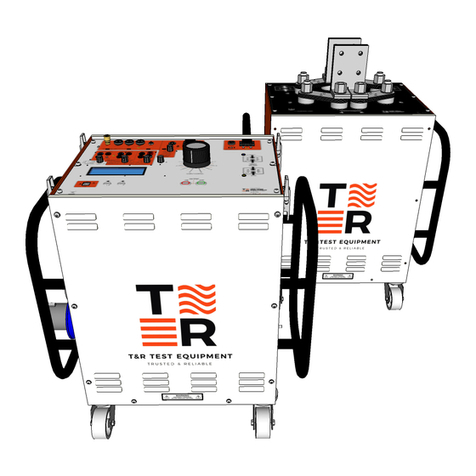
T&R
T&R CU-Ps Operating instructions
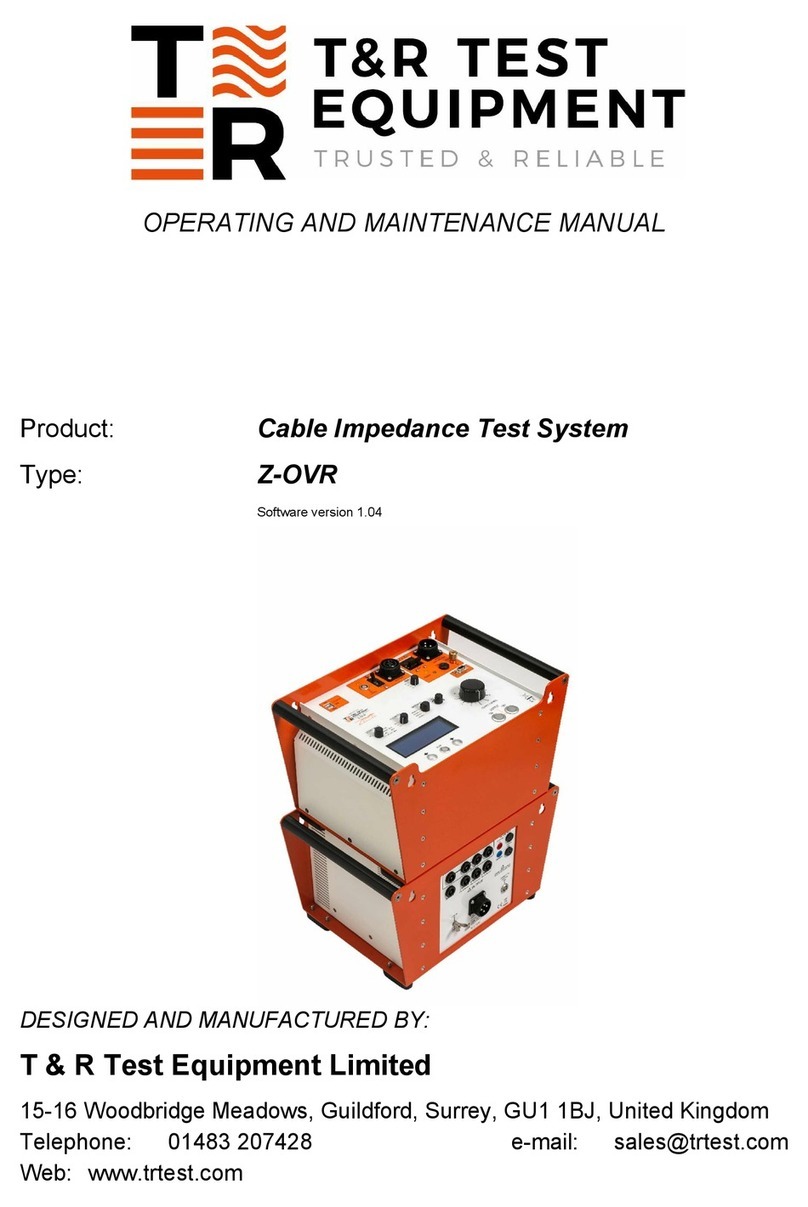
T&R
T&R Z-OVR Operating instructions
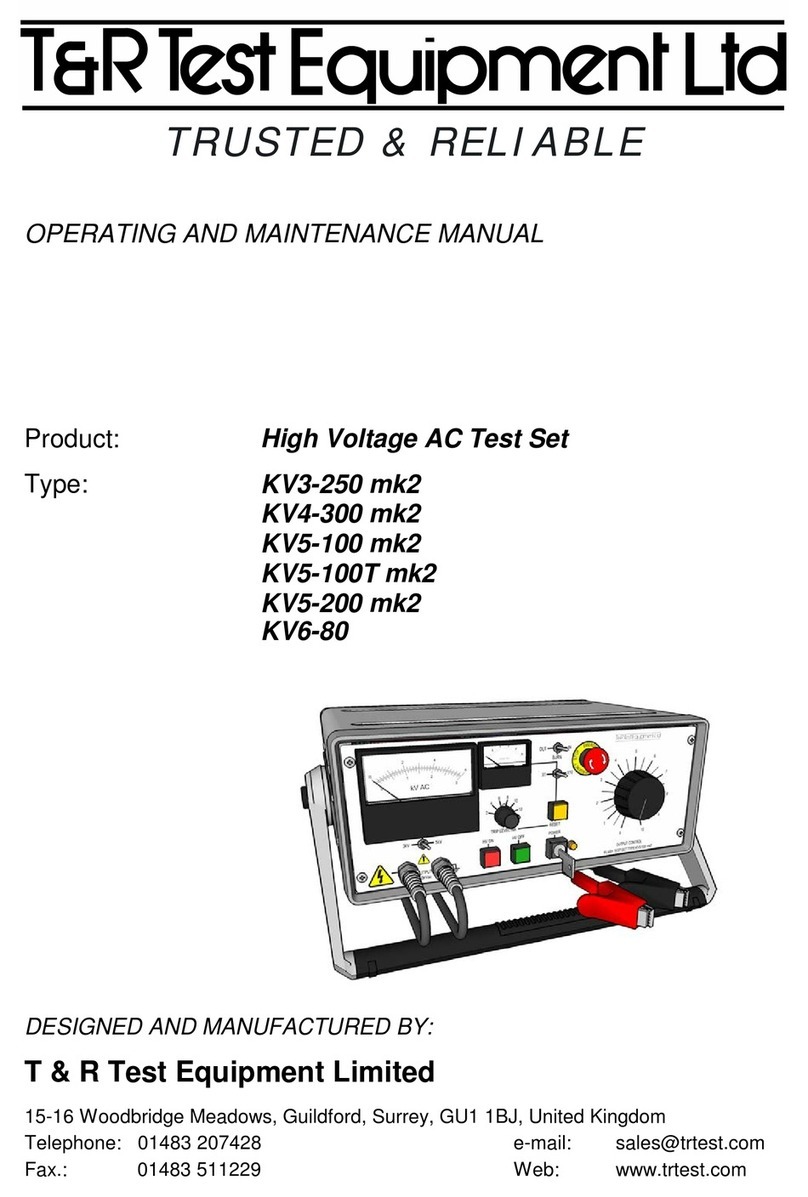
T&R
T&R KV6-80 Operating instructions
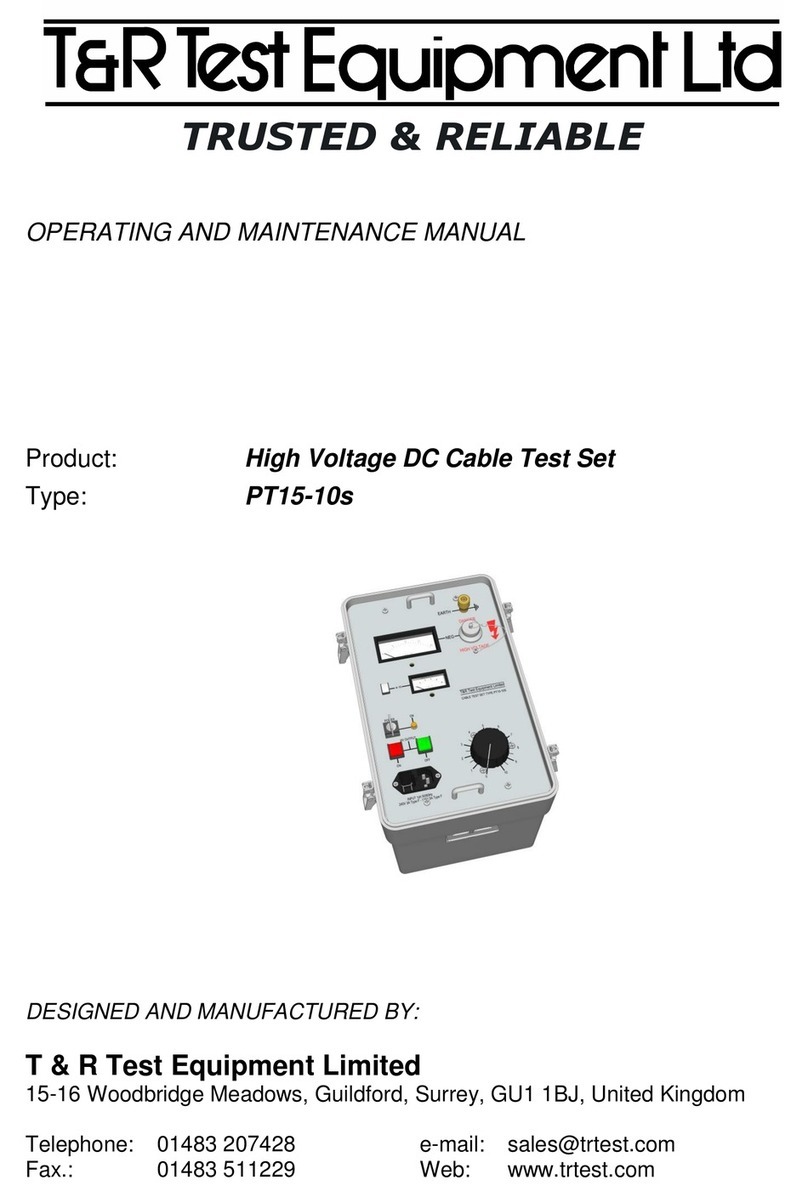
T&R
T&R PT15-10s Operating instructions
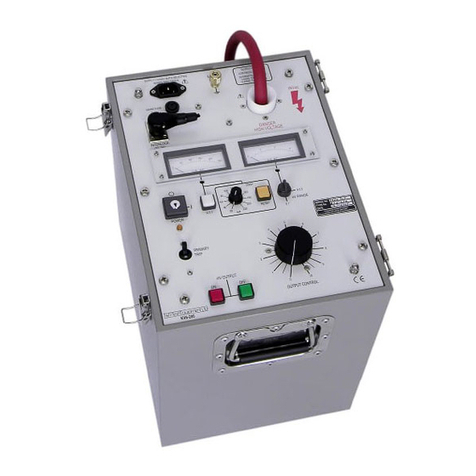
T&R
T&R KV30-40 Operating instructions
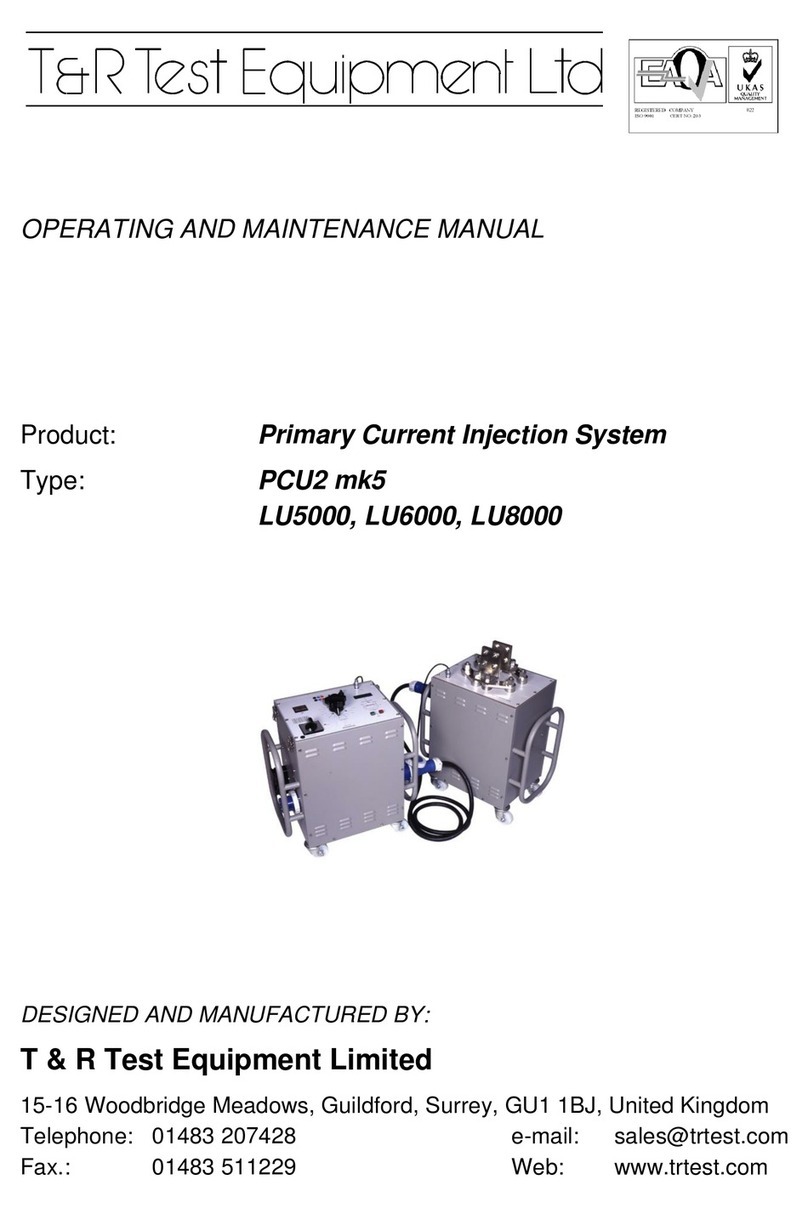
T&R
T&R PCU2 mk5 Operating instructions
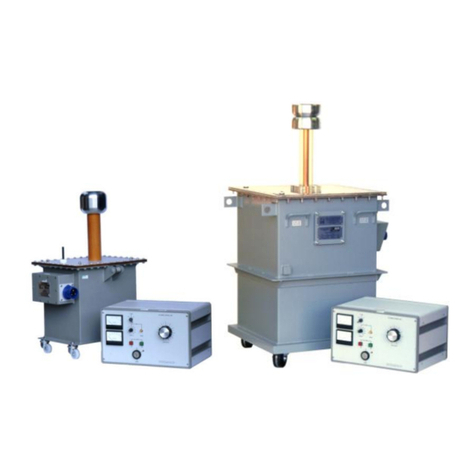
T&R
T&R KV mk2 Series Operating instructions
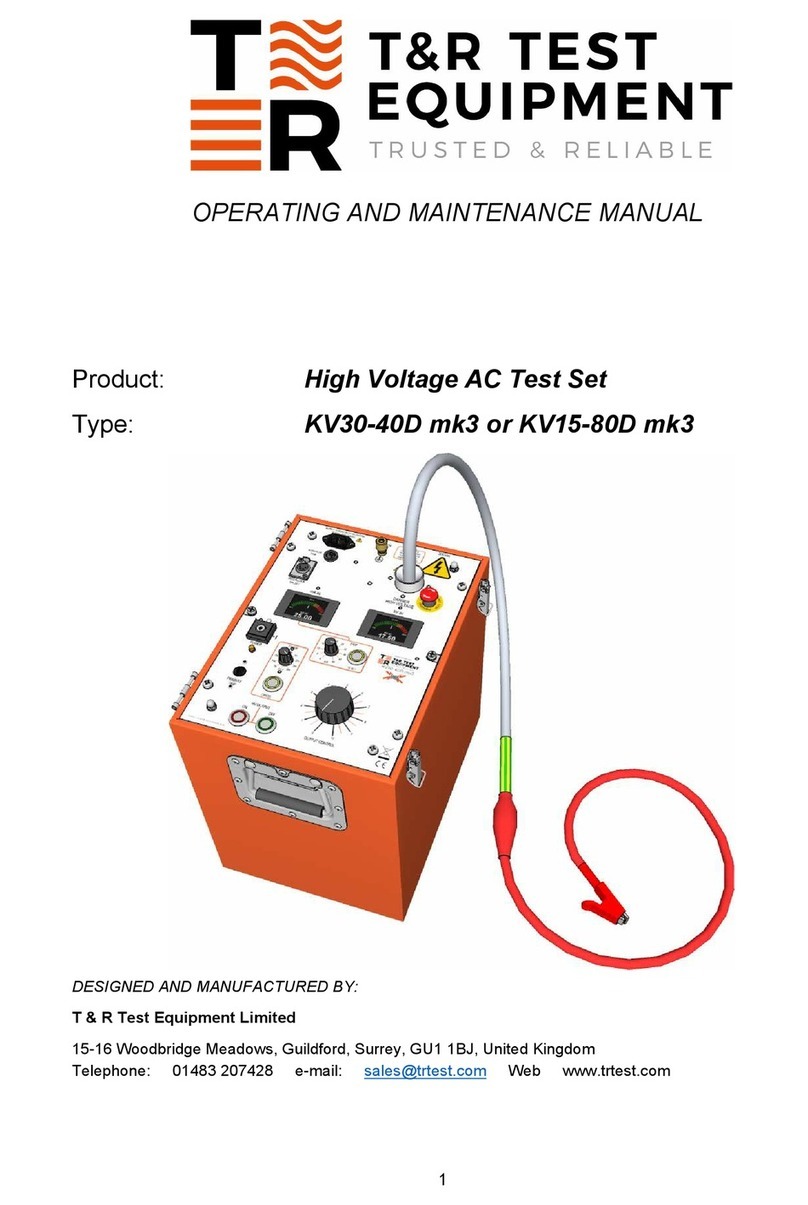
T&R
T&R KV30-40D mk3 Operating instructions

T&R
T&R 200A-3PH Operating instructions
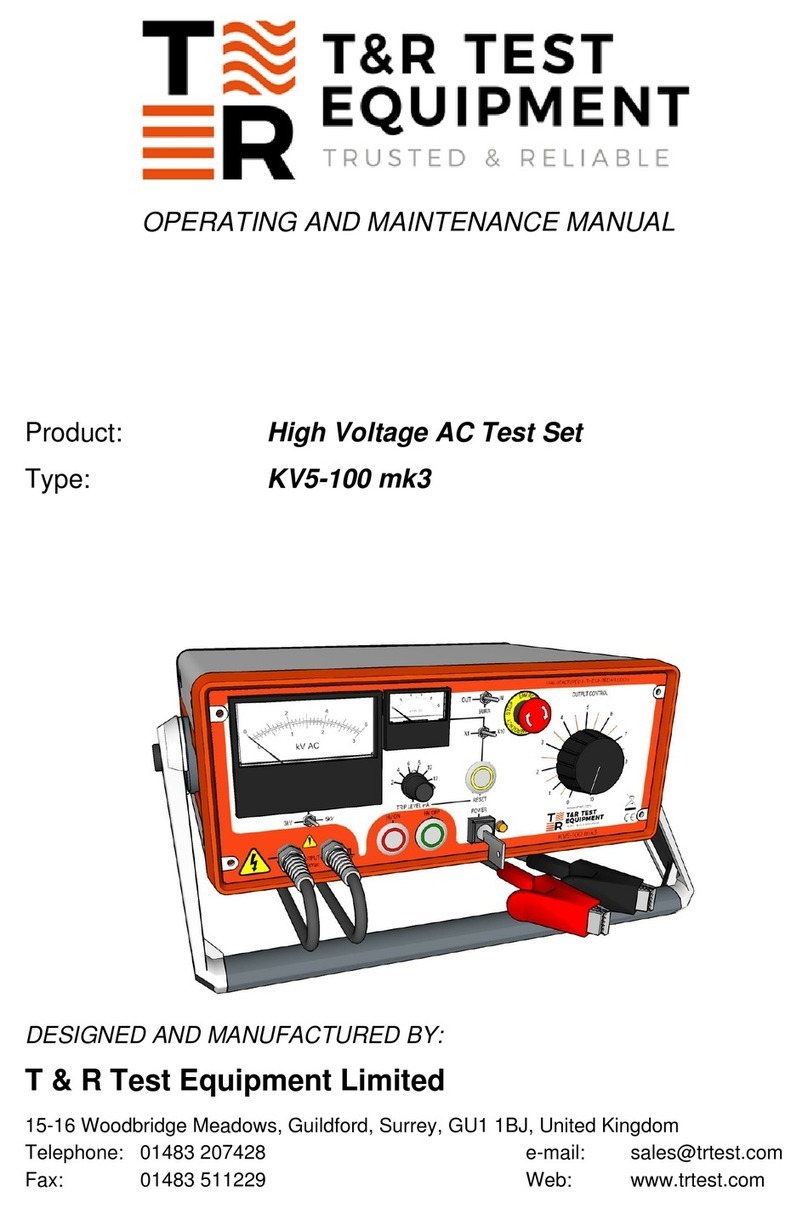
T&R
T&R KV5-100 mk3 Operating instructions
